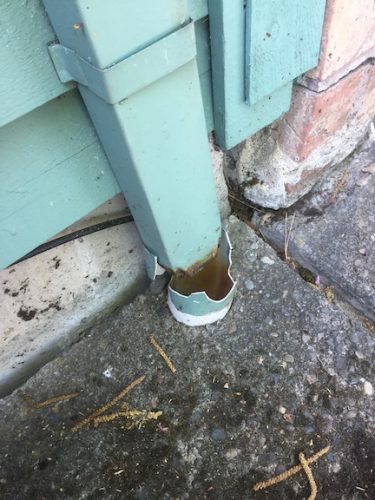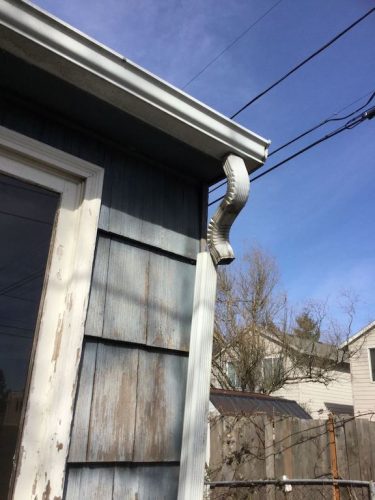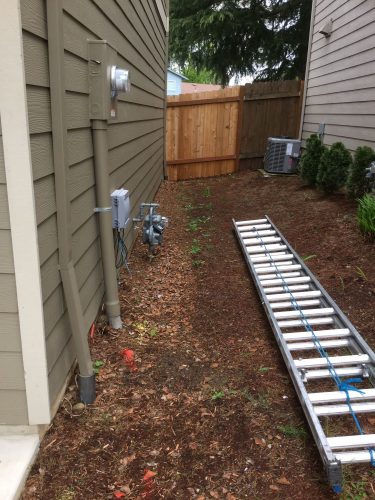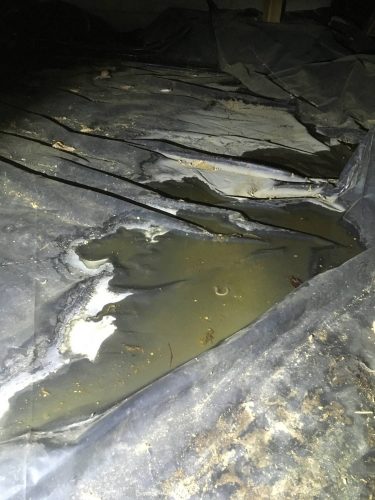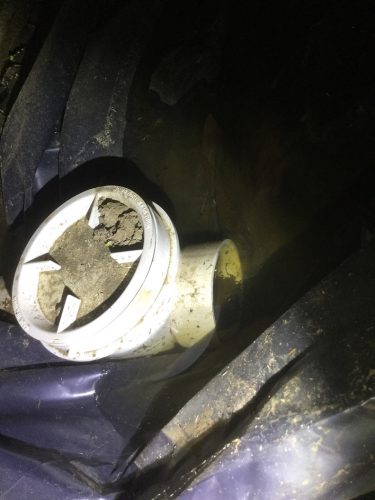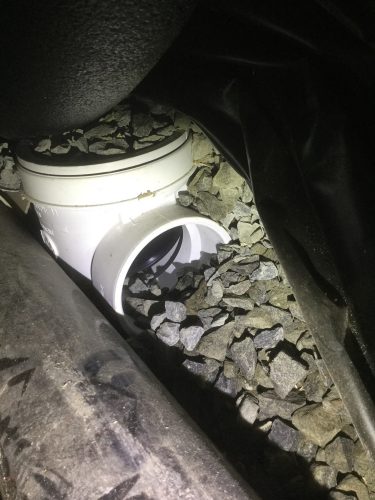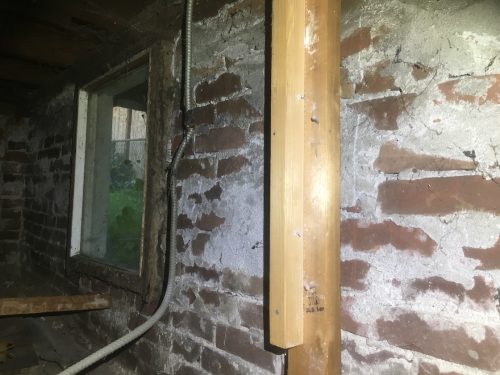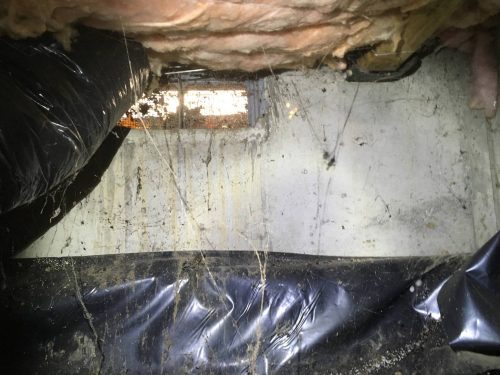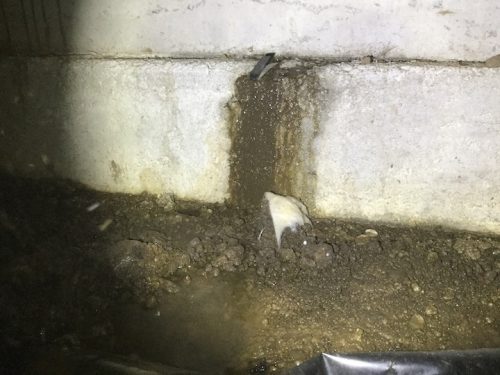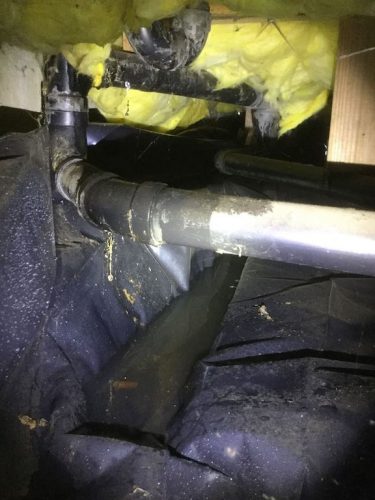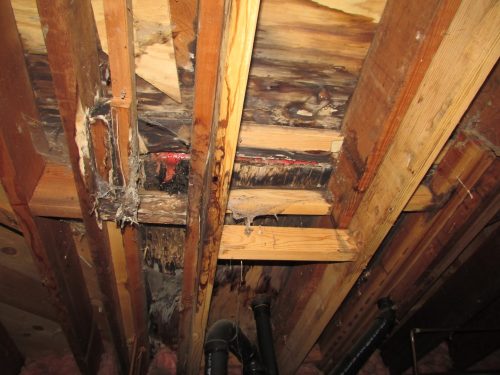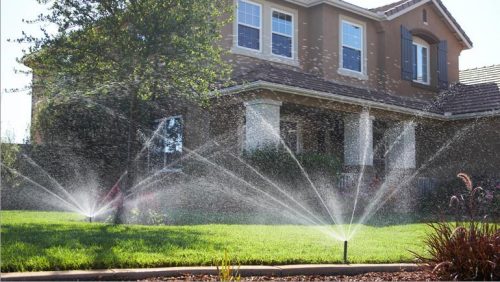Water in the crawlspace is an issue we see in homes all too often.
To the home buyer, it can be quite alarming to find water in the basement or crawlspace. Water under the home is most often an issue that can be corrected. It’s important to identify the source of the moisture to better understand what course of action can be taken to keep the area dry and to prevent damage to the home or structure. Here is a list of the most common ways that water can get into a crawlspace or basement.
1. GUTTER & DOWNSPOUT ISSUES
One of the most common sources of basement and crawlspace water is poor rainwater management. Debris from surrounding trees and vegetation can all too easily overwhelm and clog gutters and downspouts, causing gutter pooling and overflow, and clogged downspouts.
Underground drainage piping can also become clogged or broken, leaving the downspouts to pour rainwater right next to the foundation.
2. NEGATIVE GRADING AROUND THE HOME
Landscaping around the foundation should slope down and away from the home. This will encourage water to drain away from the foundation, and not into the basement or crawlspace. Negative grading is an issue we see all too often as home inspectors, in both new construction and old homes. Also, remember that mulch does not count as grading. Mulch is porous and water will drip right through it and onto the soil. Check how deep the mulch surrounding the home is – be sure that the soil is what makes a positive slope, not the mulch.
3. GROUNDWATER, OR SUBTERRANEAN WATER
In some instances, rainwater or snowmelt may saturate the soil around the home, especially in the wetter months of the year or during a spring thaw. When the soil becomes saturated, the water will find the path of least resistance, which could be the large pit in the ground that was dug for your crawlspace or basement.
4. DRAIN OR SUMP-PUMP NOT FUNCTIONING
Crawl spaces can often be neglected over long periods of time. And not until getting a home inspection do homeowners realize that a drainage system has not been functioning properly. Sump pumps should be checked and serviced annually to ensure they will continue to operate as needed. Low point drains in the crawlspace can become filled with debris, or by plastic vapor barriers that prevent water from flowing to the drain.
5. PERVIOUS FOUNDATION MATERIALS
Foundation waterproofing has become more common, particularly in homes built in the last 20-30 years. There have been great technological advances in the past few decades but even with the latest technology, complete waterproofing isn’t a guarantee.
Foundations on older homes may be built of more porous materials such as terra cotta block, brick or CMU concrete block. These materials have more joints or are more porous and may allow more moisture into the home rather than a concrete foundation. A properly installed drain and trench system or sump pump can still keep moisture levels at an acceptable level.
6. DEFECTIVE WINDOW-WELLS OR VENT-WELLS
Wells surrounding vent openings and windows may not be installed properly. Ensure they are at least several inches above the surrounding soil, and that they are secured to the foundation wall. Otherwise, water may find it’s way around the well and into the vent or window.
7. CRACKS OR GAPS IN THE FOUNDATION
Larger cracks sometimes develop in the foundation over time, as the foundation may have shifted or sank. Especially around areas where rainwater has not been dealt with. Such as a downspout that has been draining near the foundation for a long time. This can wash away soil, which can lead to shifting in the foundation. Cracks are an easy path for water to find. One solution, if the gap is wide enough, can be to inject an epoxy sealant into the crack to seal the gap. In the photo seen to the right, the sprinklers were watering up against the foundation. The excess water found its way through the crack between two separate pieces of the foundation – the footing and the stem wall.
8. LEAKING PIPES AND FIXTURES
Sometimes the easiest source of water to diagnose. When water is observed in the crawlspace, always check above and around the standing water to see if there are any signs of a leak from a distribution or drain pipe.
9. LANDSCAPE OVER-WATERING
Irrigation sprinkler heads that are directing water near the foundation can bring lots of water near the foundation. Make sure that sprinklers heads are not pointed near the foundation, and garden beds are not over-watered.
Basements and crawlspaces often go neglected, and some crawlspaces go unchecked for decades, we recommend checking your crawlspace at least twice a year for leaks and issues, the fall and spring are good times to check for unwanted standing water. We also recommend checking your sump-pump or low point drain to ensure functionality. Standing water near the foundation and footings can lead to soil shifting or settling and can cause structural issues. A small amount of care and attention can prevent costly future repairs.
Author: Silas Murphy-Ellis, Murphy Home Inspection

